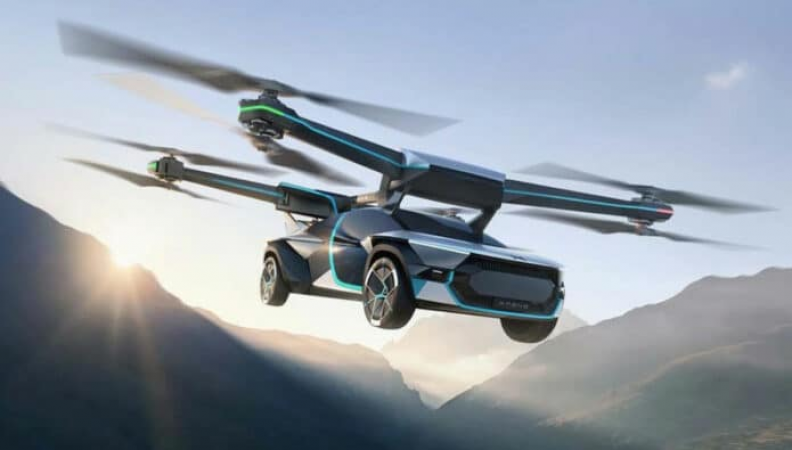
BEIJING: For decades, futurists have fantasized about flying cars, but the dream of gliding over gridlock has yet to materialize. None of the models have been mass-produced despite the efforts of several builders and startups, with the belief that consumers will not be scaled down.
A true flying car that you can drive on the highway and then take off vertically to fly over traffic jams is what the Chinese automaker XPeng wants to offer.
Earlier this week at XPeng's recent 1024 Tech Day event in China, XPeng AeroHT, an affiliate of XPeng, unveiled the most recent iteration of the world's first fully electric vertical take-off and landing (eVTOL) flying car. The most recent flying vehicle, the X3 (internal code name), is designed for both air travel and driving on the ground.
According to the manufacturer, in driving mode, the XPeng eVTOL Air Flying Car is "comparable with any conventional cars in terms of functionality and measurements."
The steering wheel and right-hand gear lever are used as controls for forward, backward, turning, climbing, hovering and descending while the flying car is in flight mode.
XPeng's flying car can fly over traffic congestion, obstacles and rivers to meet a new range of short-range mobility needs.
The flying car's eight electric motors, each attached to an 11.5-foot-diameter propeller, weigh 1,936 kg (4,268 lb). The latest version is very similar to what the business intends to put into production.
Also Read: Latest Hero Xpulse 200T is hinted at in advance of release
The X3 features a convenient fold-away rotor system that makes it easy to switch between driving and flying. The massive eight-rotor coaxial vertical lift system is mounted at the top, and what appear to be steel girders are where the propulsion units are attached.
Since lifting a 2-ton vehicle alone requires a considerable amount of power, the car can weigh up to four times and carry only two passengers. This will become more difficult when people and cargo are added.
To further ensure safety, the air cab features a new flight control system and a dual-engine backup system with fault-tolerant control functions. Overall system design complexity has also been reduced with a horizontal dual-rotor structure optimized for a new distributed multi-rotor configuration, further increasing flight safety and reliability.
No information is available regarding the endurance or range of the vehicle. According to AeroHT, the test version of the new flying car has successfully completed several single-motor failure tests in addition to its maiden flight.
Also Read: Spectre is the first entirely electric vehicle from Rolls-Royce
The company intends to further refine the flying car design before putting it into production, but they claim the most recent concept is 80% identical to the final design.